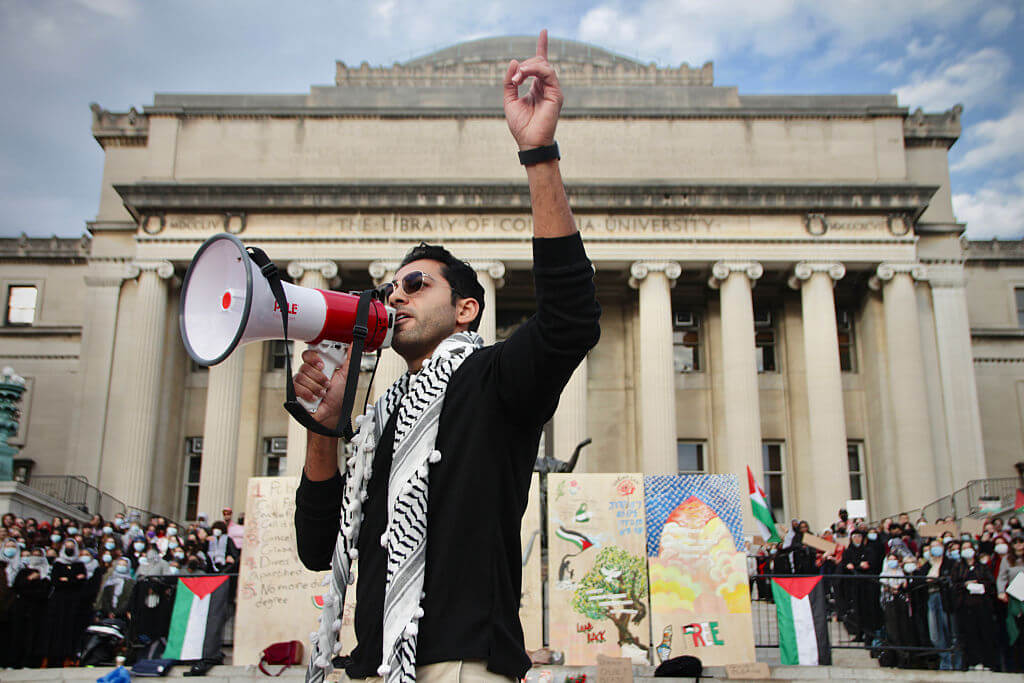The East Jerusalem flashpoint that could ignite the entire Middle East

Israeli security forces close-off a street following clashes between Palestinians and Israeli settlers in the east Jerusalem neighborhood of Sheikh Jarrah on February 13, 2022.(Photo: AFP via Getty Images:
This article originally appeared on Haaretz, and was reprinted here with permission.
The East Jerusalem neighborhood of Sheikh Jarrah has again become the site of violent clashes, just as it did before last year’s war between Israel and Gaza. Haaretz explains the root of the friction, and how Sheikh Jarrah became a Palestinian national symbol.
Sheikh Jarrah or Shimon Hatzadik?
Originally a neighborhood of luxury homes, Sheikh Jarrah was founded in the late 19th century by prominent Palestinian families from Jerusalem, mainly the Husseinis and Nashashibis. Later, two small neighborhoods for impoverished Jews were established there – Shimon Hatzadik and Nahalat Shimon.
Both were abandoned in 1948 shortly before the Jordanian Legion captured East Jerusalem, and Palestinian refugees from western Jerusalem and other parts of Israel moved in.
There’s no separate census for Sheikh Jarrah, but it and nearby Wadi Joz have 14,000 Palestinian residents combined. Several thousand of them live in Sheikh Jarrah, as do a few dozen Jews.
Haaretz uses the neighborhood’s Arabic name both because of its Palestinian majority and because that’s how it was known for most of its history.
Why did clashes erupt this week?
They began Sunday after MK Itamar Ben-Gvir announced he was opening a parliamentary office in the neighborhood. He and his supporters came and erected a tent next to the home of the Salem family, which is slated to be evicted next month.
Ben-Gvir opened the office after the home of the only Jewish family in that part of Sheikh Jarrah was torched Friday night. The family’s car has been set ablaze repeatedly, but never their house. Palestinians claimed the fire was caused by an electrical short, but police said there were signs of arson and arrested two suspects.
Almost immediately after the office opened, Palestinians and Jews began verbally attacking one another. On Sunday evening, this deteriorated into physical violence, with stones and firecrackers being thrown. Eventually, police forcibly dispersed both sides and removed Ben-Gvir’s supporters, but not him. Dozens of Palestinians and several Jews were lightly wounded.
While this was happening, Ben-Gvir fell and briefly lost consciousness. He was taken to the hospital and released soon afterward. He returned to Sheikh Jarrah on Monday.
What is the land’s legal status?
Most is privately owned Palestinian land, but two sections contain land owned by Jews – one in the neighborhood’s east and one in the west. Two Israeli laws allow only Jews to reclaim property they owned before 1948. The Absentee Property Law confiscated all property owned prior to 1948 by Palestinians who spent time in an enemy country either before or after the law’s enactment. A law dating to 1970 allows Jews to reclaim their property.
Since the 1980s, right-wing organizations have worked to locate the heirs of Jewish property in Sheikh Jarrah and begin eviction proceedings against the current Palestinian residents. To date, five Palestinian families have been evicted. Legal proceedings are ongoing against dozens of others.
Where do the eviction cases stand?
Legally, there’s a big difference between the neighborhood’s eastern and western sections. Last May’s fighting between Israel and Gaza was prompted by events in the western section.
In the 1990s, the two Jewish organizations that owned this land sold it to the Nahalat Shimon company, which is registered overseas. Since then, the company has worked to evict the 27 Palestinian families who have lived there since moving there in the 1950s at the initiative of the Jordanian government and the United Nations.
Both sides are now awaiting a Supreme Court ruling, after having rejected a compromise proposed by the justices that would have prevented an immediate eviction. The legal proceedings have been lengthy because some of the houses are privately owned by the Palestinian families.
This section is where the Salem family, currently numbering 11 people, has lived since 1951. Two weeks ago, the bailiff’s office ordered them evicted between March 1 and April 1. But police are expected to try to avoid an eviction so soon before Ramadan, which starts in early April, and they may well try to postpone it until after Ramadan ends in May.
Whenever it happens, however, it will probably spark renewed protests and violence.
How was Sheikh Jarrah connected to last May’s war?
The battle against Palestinian evictions and the Judaization of the neighborhood has gone on for years. Every Friday for 13 years, dozens of Palestinian and left-wing Jews have demonstrated there.
But last year, Sheikh Jarrah became a Palestinian national symbol, because 13 families were facing immediate eviction simultaneously. That created the impression that it wasn’t about the ownership of private property, as settlers claimed, but an effort to make the neighborhood Jewish through mass evictions with the authorities’ help.
The planned evictions attracted considerable international attention, and Palestinian social media activists from Sheikh Jarrah helped turn it into a symbol of Palestinian resistance. The neighborhood’s relative accessibility also helped. It’s close to both a major Jerusalem artery, Bar-Lev Street, and several European consulates.
In May, Hamas’ spokesman in the Gaza Strip threatened that any eviction would prompt a violent response. Young Palestinians from throughout Jerusalem began coming to Sheikh Jarrah for mass prayers and protests that usually ended with police forcibly removing them.
There were many documented cases of unjustified police violence, and many residents were wounded by sponge-tipped bullets. In addition, a car-ramming attack wounded seven police officers at a roadblock police stationed in Sheikh Jarrah.
On top of all this was the police’s decision to close the steps by the Old City’s Damascus Gate. Both developments, the protests and the closing off of the steps, occurred at the start of Ramadan. These two issues became the main sources of the tensions that led to both the Gaza-Israel fighting and violent interethnic riots in mixed Jewish-Arab cities.
Will the current tension spark another round of fighting?
It’s hard to predict. But it’s also hard to ignore the fact that even if tempers calm in the coming days, Sheikh Jarrah provides all the same pretexts for violence that led to the last round – an almost certain eviction of Palestinians from their homes, Palestinian and international attention, threats by Hamas, and a far-right MK showing up to inflame the atmosphere.
This article originally appeared on Haaretz, and was reprinted here with permission.
The Forward is free to read, but it isn’t free to produce

I hope you appreciated this article. Before you go, I’d like to ask you to please support the Forward.
Now more than ever, American Jews need independent news they can trust, with reporting driven by truth, not ideology. We serve you, not any ideological agenda.
At a time when other newsrooms are closing or cutting back, the Forward has removed its paywall and invested additional resources to report on the ground from Israel and around the U.S. on the impact of the war, rising antisemitism and polarized discourse.
This is a great time to support independent Jewish journalism you rely on. Make a gift today!
— Rachel Fishman Feddersen, Publisher and CEO
Support our mission to tell the Jewish story fully and fairly.
Most Popular
- 1

Fast Forward Ye debuts ‘Heil Hitler’ music video that includes a sample of a Hitler speech
- 2

Opinion It looks like Israel totally underestimated Trump
- 3
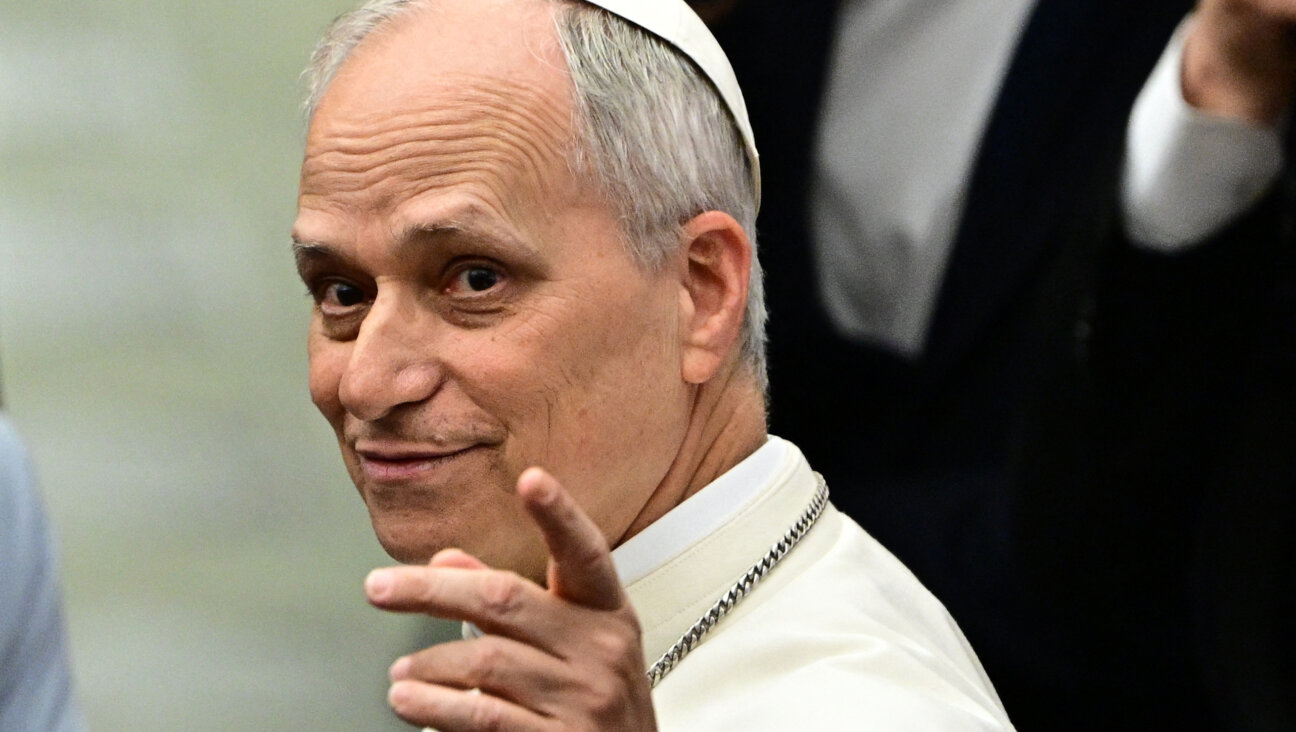
Culture Is Pope Leo Jewish? Ask his distant cousins — like me
- 4

Fast Forward Student suspended for ‘F— the Jews’ video defends himself on antisemitic podcast
In Case You Missed It
-
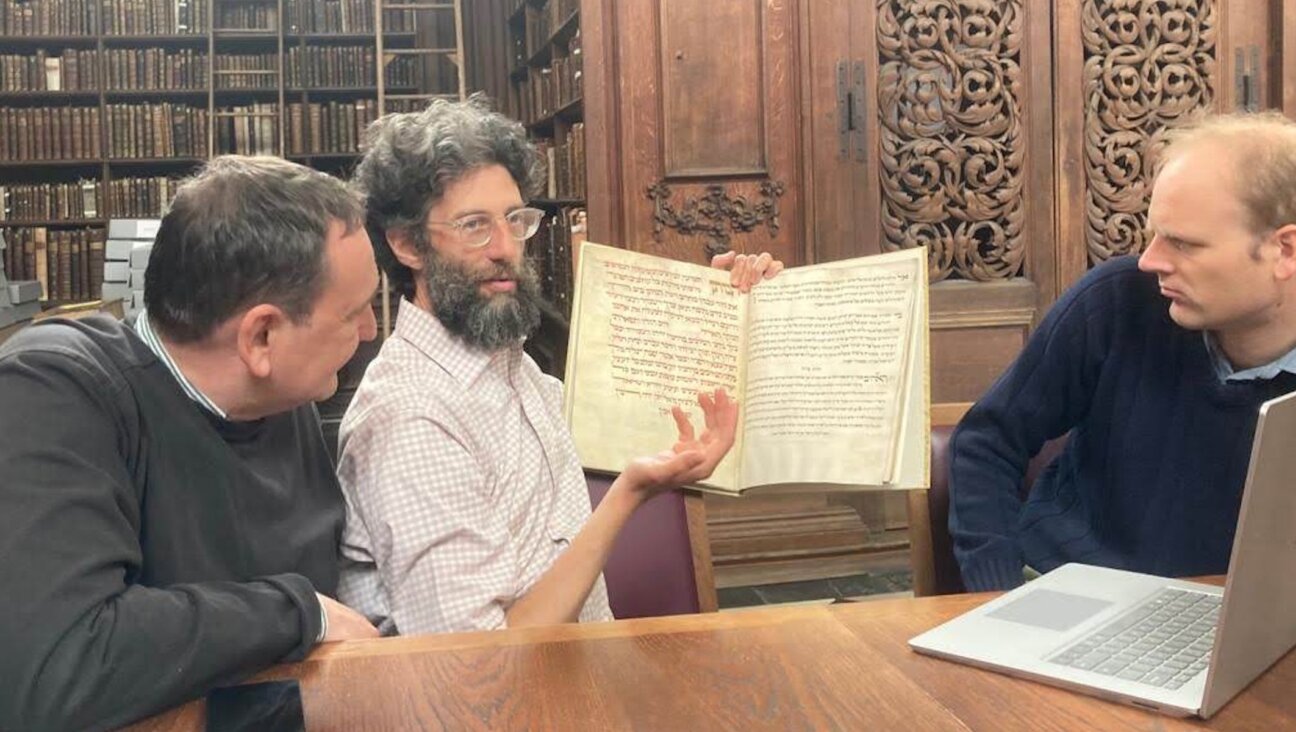
Fast Forward For the first time since Henry VIII created the role, a Jew will helm Hebrew studies at Cambridge
-
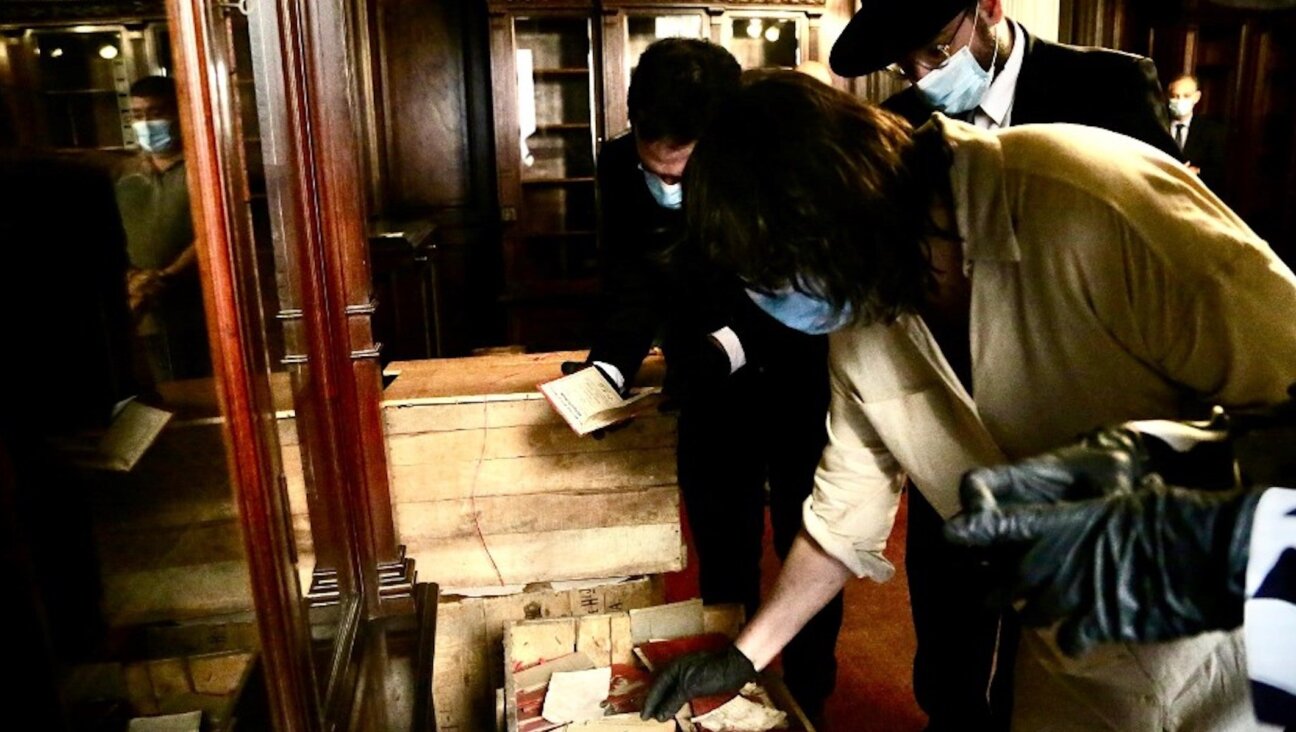
Fast Forward Argentine Supreme Court discovers over 80 boxes of forgotten Nazi documents
-

News In Edan Alexander’s hometown in New Jersey, months of fear and anguish give way to joy and relief
-
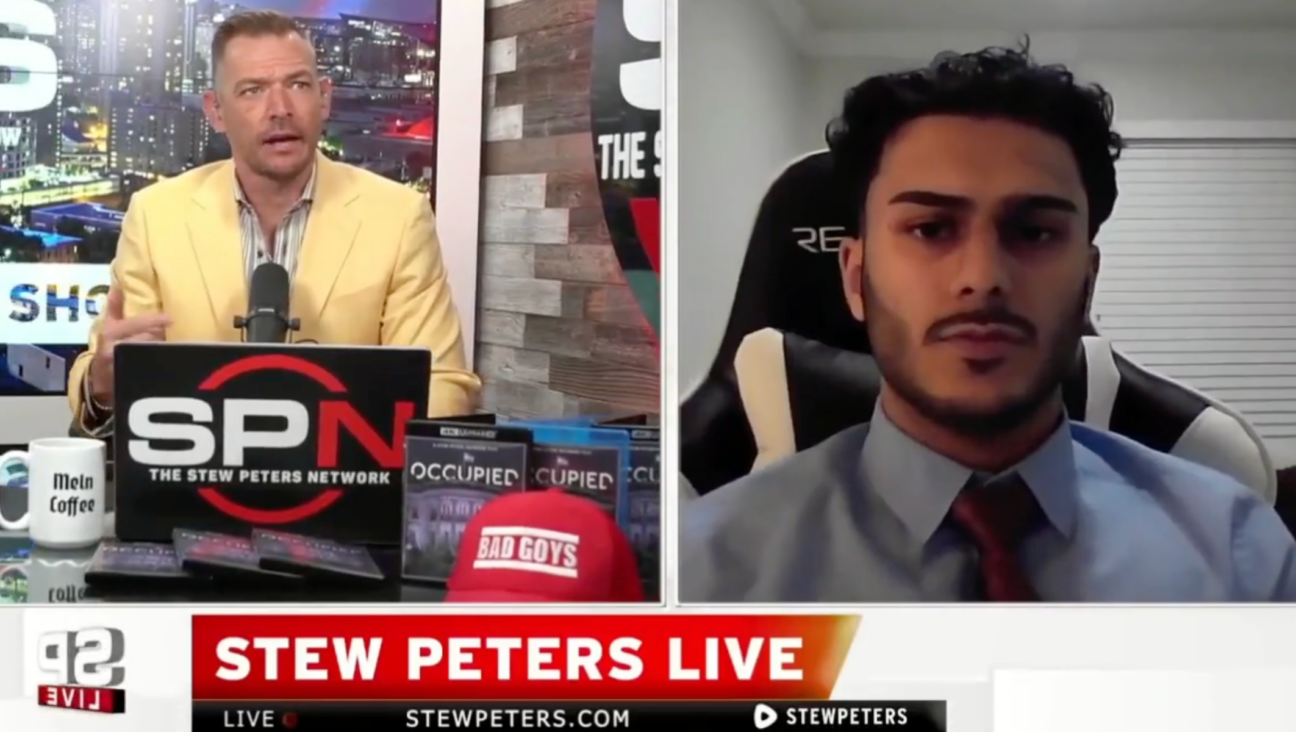
Fast Forward What’s next for suspended student who posted ‘F— the Jews’ video? An alt-right media tour
-
Shop the Forward Store
100% of profits support our journalism
Republish This Story
Please read before republishing
We’re happy to make this story available to republish for free, unless it originated with JTA, Haaretz or another publication (as indicated on the article) and as long as you follow our guidelines.
You must comply with the following:
- Credit the Forward
- Retain our pixel
- Preserve our canonical link in Google search
- Add a noindex tag in Google search
See our full guidelines for more information, and this guide for detail about canonical URLs.
To republish, copy the HTML by clicking on the yellow button to the right; it includes our tracking pixel, all paragraph styles and hyperlinks, the author byline and credit to the Forward. It does not include images; to avoid copyright violations, you must add them manually, following our guidelines. Please email us at [email protected], subject line “republish,” with any questions or to let us know what stories you’re picking up.








